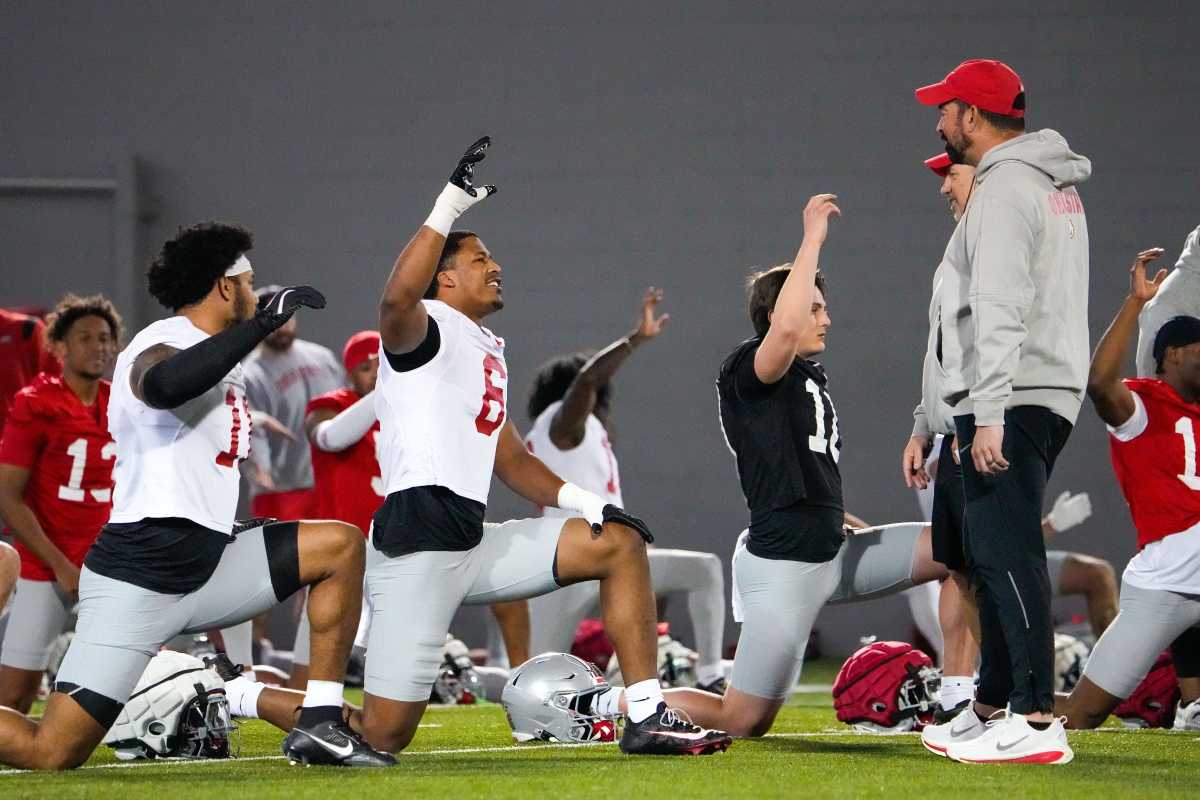On a Wednesday that saw significant attention from the media, fans, and analysts alike, Ohio State University made an announcement that has sparked intense reactions from all corners of the college football world. The announcement, while significant in its own right, was accompanied by an outpouring of backlash from certain sectors, leading many to question the implications of the decision for the Buckeyes’ future. With Ohio State football being one of the most storied and influential programs in the country, any major development in the program quickly becomes a focal point of discussion, and this latest announcement is no different.
In this analysis, we will take a closer look at the details surrounding Ohio State’s announcement, the nature of the backlash it has provoked, and the larger context within which this decision takes place. We will also explore how this move may impact the program in both the short and long term, particularly as it relates to recruiting, team culture, and the broader landscape of college football. From the perspectives of Ohio State’s coaching staff, its loyal fan base, and the national media, this announcement is not just another piece of news—it’s a decision that could have far-reaching consequences for the Buckeyes.
The Announcement: What Ohio State Said
Ohio State’s announcement on Wednesday was met with surprise and, in some cases, confusion. The university made it clear that it would be moving forward with a significant change in its football program, one that had not been widely anticipated. While the exact details of the announcement varied depending on the sources, several key components of the decision were immediately apparent.
At the core of Ohio State’s announcement was the confirmation of a strategic shift in how the program would approach certain aspects of its operations. It could involve changes in the coaching staff, alterations to the team’s training regimen, or a move to further embrace new technologies or methodologies in recruiting and player development. Another possibility was an announcement regarding scheduling, facilities upgrades, or even changes in how Ohio State navigates the NCAA’s evolving landscape of rules and regulations.
For now, Ohio State’s statement remained relatively vague, leaving many to speculate on the specifics of the decision. What made the announcement particularly striking was the fact that the announcement came amid ongoing discussions about player compensation, the transfer portal, and the future of college athletics as a whole. As such, the timing of Ohio State’s declaration was significant, and its contents sent ripples through the college football community.
The Backlash: Why the Announcement Was Met with Criticism
While Ohio State hoped to present its announcement as a step toward future growth and improvement, the reaction was far from universally positive. Backlash to the announcement came quickly and intensely, with a number of prominent figures in college football expressing concerns over the potential long-term consequences for the program and the broader implications for the sport.
The nature of the backlash was multi-faceted, touching on a variety of issues related to college football’s rapidly changing landscape. Below are some of the key reasons why Ohio State’s announcement has stirred controversy:
1. Fan Concerns Over Team Culture and Leadership
One of the first sources of criticism centered around concerns about the potential impact on Ohio State’s team culture and leadership. The Buckeyes have long been known for their strong team-oriented approach, with a focus on discipline, mental toughness, and accountability. Any change that is perceived to be too radical or out of sync with the established values of the program is always met with resistance from the passionate fan base.
Ohio State’s leadership, under head coach Ryan Day, has been largely praised for maintaining the program’s high standards while adapting to the modern era of college football. However, some critics argue that major changes—particularly ones that stray too far from the Buckeyes’ traditional values—could disrupt the team’s culture and cohesion. For a program that has thrived on its unity and emphasis on fundamentals, even small shifts can feel like a departure from what has made Ohio State successful.
2. Concerns About Recruiting
Another area of concern for critics is how Ohio State’s decision could impact recruiting. In recent years, the Buckeyes have been able to recruit at a consistently high level, attracting top talent from across the nation and establishing a pipeline to the NFL. The change announced by Ohio State could be seen as either a move that enhances their recruiting efforts or a decision that risks alienating recruits who value stability and a clear vision for the future.
Recruiting is a cornerstone of success in college football, and any perceived disruption to Ohio State’s established strategy could have a ripple effect. Some recruits may be hesitant to commit to a program that is perceived to be making too many drastic changes, particularly when other programs have established themselves as stable and predictable options.
3. The Transfer Portal and Name, Image, and Likeness (NIL)
At the center of much of the backlash is the broader landscape of college football, specifically the role of the transfer portal and NIL deals in reshaping the sport. Ohio State’s announcement may have been viewed as a response to these evolving dynamics, potentially signaling that the program is embracing new ways to navigate the changing rules. However, this has caused concern for some who believe that an overemphasis on these new factors could erode the integrity of college athletics.
The transfer portal has made it easier for players to switch schools, and NIL deals have introduced new financial incentives for student-athletes. While these changes are now part of the college football landscape, critics argue that too much focus on these elements could distract from what made the sport great in the first place: the student-athlete experience, the value of developing players, and the traditions of college football.
Some feel that Ohio State’s move could be an overreaction to the pressure of adapting to NIL and the transfer portal, potentially leading to an over-reliance on external factors rather than focusing on the core strengths of the program—coaching, player development, and a commitment to building championship teams through recruitment and development.
4. The Fear of Losing Ohio State’s Identity
Ohio State is a program that is synonymous with tradition, success, and an unwavering commitment to excellence. It has long been seen as the model for what a college football program should look like, balancing success on the field with a commitment to academic achievement, personal development, and community. However, with college football entering an era where money, media, and commercial interests are playing an increasingly central role, some fear that Ohio State’s identity as a football powerhouse could be compromised.
The backlash, in part, is driven by a fear that the announcement signals a shift away from Ohio State’s traditional values in favor of a more corporate, profit-driven model. Critics argue that the program should prioritize what has always made Ohio State successful—the development of talent through hard work, team-oriented football, and the building of a legacy that extends beyond just winning championships.
Ohio State’s Response: Defending the Decision
In the face of mounting criticism, Ohio State has responded to the backlash with a public defense of the decision. The university’s officials, including head coach Ryan Day, have emphasized that the changes are designed to position the program for continued success in an ever-evolving landscape. While they acknowledge that change can be difficult, they argue that the move is necessary to keep Ohio State at the forefront of college football.
Ryan Day, in particular, stressed that the decision was made with the long-term health of the program in mind. According to Day, Ohio State’s ability to evolve and adapt is what has allowed the program to remain a national powerhouse. He pointed to the program’s commitment to player development, recruiting excellence, and adapting to new trends in the sport as the foundation of the decision.
The university also highlighted the importance of staying competitive in a college football world where financial considerations, new media rights, and NIL opportunities are becoming more prominent. Ohio State’s leadership believes that the changes are designed to ensure the program remains a top destination for recruits while also protecting the integrity of the student-athlete experience.
Long-Term Impact: What Does This Mean for Ohio State’s Future?
As Ohio State moves forward with its decision, the long-term effects will likely depend on how well the program navigates the challenges ahead. While the initial backlash is understandable, it’s important to recognize that change is often necessary for a program to stay competitive. The college football landscape is in the midst of a significant transformation, and Ohio State’s leadership is clearly trying to position the program for continued success in this new era.
Ultimately, the success or failure of this decision will depend on the program’s ability to balance innovation with tradition, ensuring that Ohio State’s core values remain intact while also adapting to the demands of the modern game. If the changes lead to greater success on the field and continued dominance in recruiting, the backlash will likely fade, and Ohio State will emerge stronger than ever.
However, if the changes lead to instability or a departure from the program’s traditional strengths, the backlash could grow, and Ohio State may face challenges in regaining the trust of its fans and recruits. As with any major decision, time will tell whether this move ultimately pays off for Ohio State football.
A Critical Moment for Ohio State
Ohio State’s announcement on Wednesday marks a pivotal moment in the program’s history, one that will shape the future of the Buckeyes for years to come. While the backlash to the decision is notable, it is not uncommon for high-profile programs like Ohio State to face scrutiny when making significant changes. The key will be how the program responds to the criticism and whether the adjustments made lead to continued success on the field.
In the end, Ohio State’s commitment to excellence—both on and off the field—remains a constant. As the Buckeyes continue to adapt to the evolving landscape of college football, the next few years will determine whether these changes will strengthen the program or alter its trajectory. For now, fans, coaches, and analysts alike will be closely watching how Ohio State navigates this crucial crossroads in its storied history.



